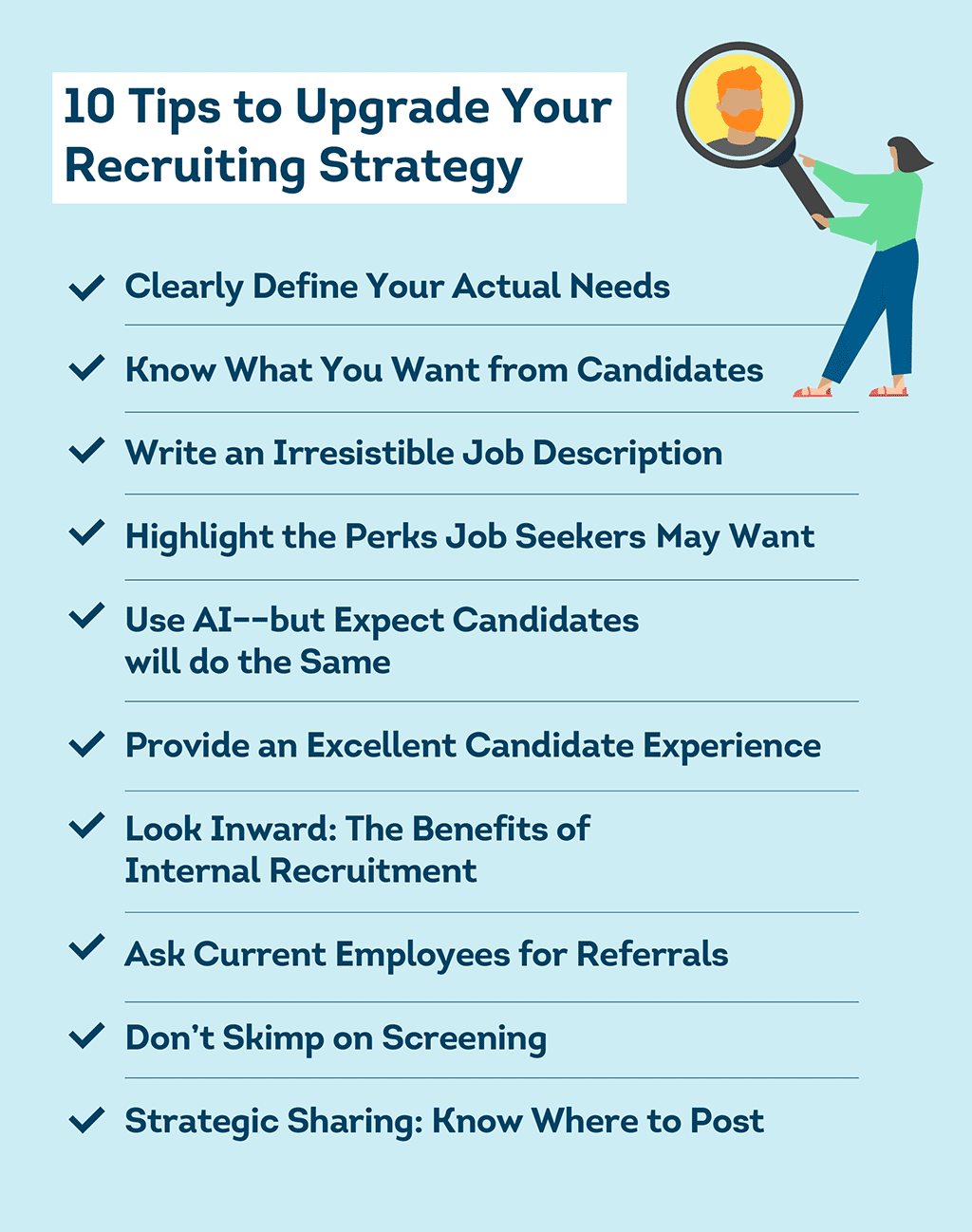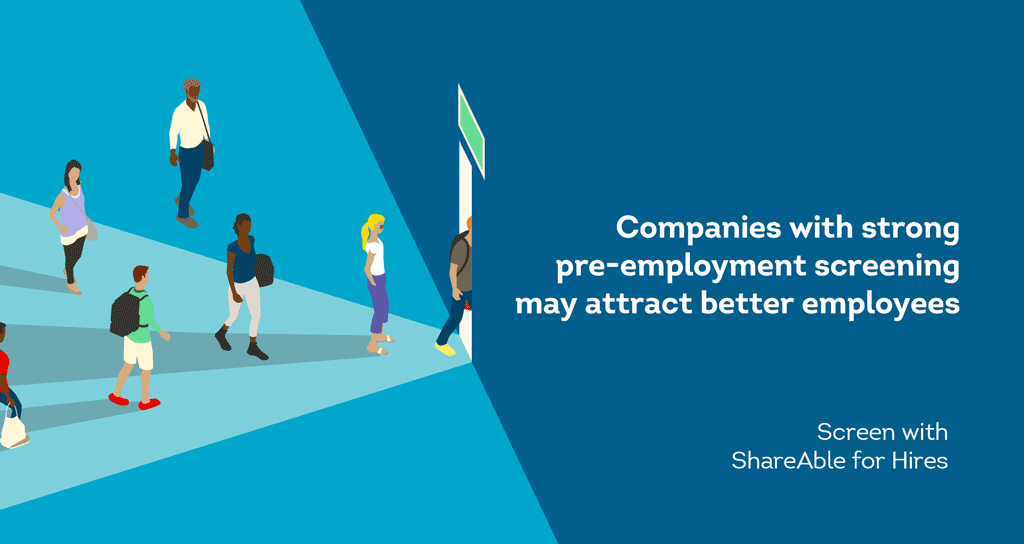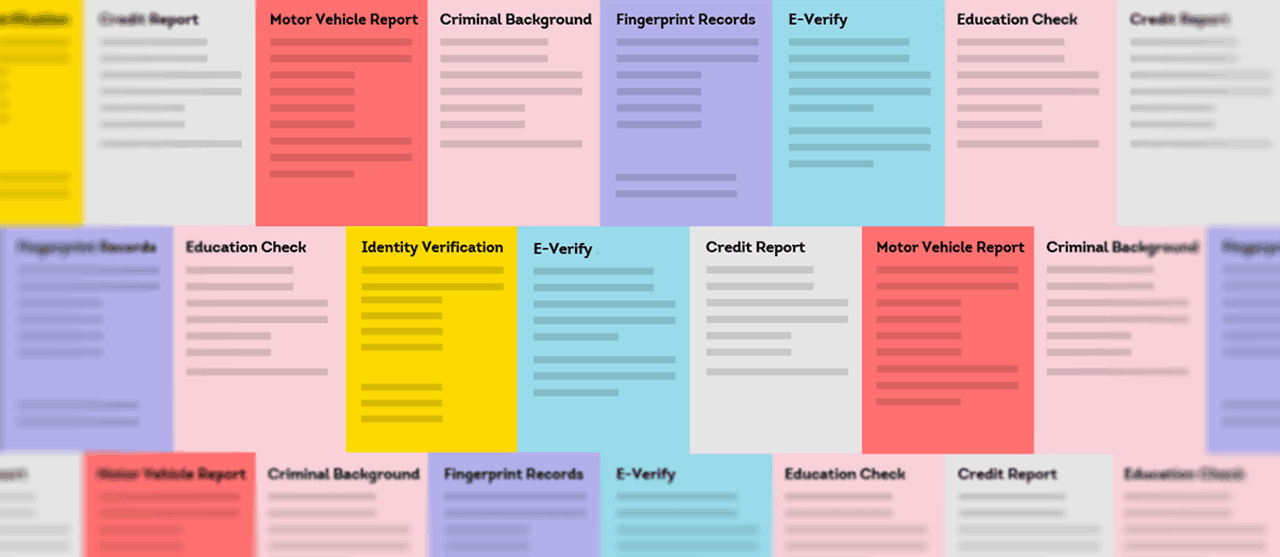Even in small independent businesses, if your recruiting strategy isn't properly optimized, you may risk losing out on the best potential employees. Thankfully, there are several things you can do to help upgrade your hiring process, including: clearly defining your needs and ideal candidate qualifications, knowing what to highlight in your job description and during interviews, turning towards current employees, providing a great candidate experience, and always screening potential hires.
Disclosure: This content, except as otherwise indicated or stated on this site, is the property of TransUnion Rental Screening Solutions, Inc. This content is for educational purposes and for convenience only. Trademarks used are the property of their respective owners, and no endorsement or affiliation is implied. The information presented in this content is “as is” without warranties of any kind, and specifically is not represented to be complete and does not constitute legal advice, and is subject to change without notice. You are encouraged to check these terms from time to time for changes, and by accessing this site you agree to these terms and all terms listed. Laws and regulations may vary by state and locality. Consult your own counsel if you have legal questions related to your rental property practices and processes.
Disclaimer: Remember that this material is intended to provide you with helpful information and is not to be relied upon to make decisions, nor is this material intended to be or construed as legal advice. You are encouraged to consult your legal counsel for advice on your specific business operations and responsibilities under applicable law. Trademarks used in this material are the property of their respective owners and no affiliation or endorsement is implied.
There’s a reason people refer to successful businesses as finely tuned machines. Like an experienced engineer, small business owners should be constantly tweaking, greasing wheels, and adjusting processes to create the best results––otherwise you may risk your livelihood coming to a grinding halt.
According to the U.S. Bureau of Labor Statistics, the unemployment rate was 3.7% at the beginning of 2024, one of the lowest of the last twenty years. Now, with fewer people searching for jobs, companies need to be extra attentive to standing out in their recruitment strategies. This is especially true for small businesses who may not have the resources of large corporations.

For example, most companies already conduct at least some pre-employment screening with companies like ShareAble for Hires®. However, there are many other parts of the hiring process that often get overlooked––and are chock full of opportunities to wow great candidates.
This article covers recruitment strategies for small businesses. It includes many ideas for taking your hiring process to the next-level.
Here’s what to expect:
Why a Good Recruitment Strategy Matters
Even as a small business owner, if you don’t have a top-notch recruiting strategy and a stellar job post, you could be left behind. In fact, according to the Society for Human Resource Management, 92% of applicants never finish online job applications. This means some top candidates could give up on your business before you even see their resume.
And, according to TalentBoard, two of the top three reasons applicants withdrew from searches were 1: they felt their time was disrespected, and 2: the recruitment process took too long.
Unfortunately, speed can be a challenge in small business. Afterall, with strained resources, losing hours to sorting through resumes isn’t always among the most important tasks of the day. However, in competitive markets, you can’t afford to let hiring fall by the wayside.
Whether setting up phone interviews, giving candidates updates, or completing candidate background checks, if you don’t have a sound, speedy recruiting strategy, you could get left in the dust.
10 Tips to Upgrade Your Recruiting Strategy
While small business owners might not have the same resources as larger companies, there are still several things you can do to make yourself more attractive to potential hires.
Here are some of the best tips to help take your hiring efforts to the next level:
1. Clearly Define Your Actual Needs
It’s common for companies of all sizes to get stuck in the rut of “we’ve always done things this way” and continue going through the motions. However, when it comes to hiring, this way of thinking could destroy real growth.
Before starting the recruitment process, it’s helpful to first look at the potential position and define your actual need. For example, if you’ve recently had a full-time designer leave your staff, figure out if you truly need a full-time designer. If not, maybe it’s possible to just hire a contractor on an as-needed basis.
Sometimes, taking the time to determine your realistic business needs can result in surprising realizations and potential cost-saving ideas for the future.
Pro Tip: If you do hire only part-time or contract help, make sure you know how to hire a freelancer, including how to vet them.
2. Know What You Want from Candidates
Once you know what you want your job to look like, the next step in your recruitment strategy is to really think hard about what the ideal candidate may bring to the table. This includes things like:
- Years of previous relevant work experience
- Educational level
- Any existing certifications
- Languages spoken
- Personality and attitude
- Communication skills
The “ideal candidate” is subjective and can really vary depending on the job. For example, if you’re hiring a customer service person, you might want to find someone who is friendly, obliging, and enjoys solving problems. However, if you’re hiring an attorney, you may want someone more aggressive who doesn’t shy away from conflict.
3. Write an Irresistible Job Description
You may not recruit the best candidates if your job description has the personality of stale bread. Knowing how to write a job description that attracts great employees is a skill that can really punch up your hiring efforts.
Great job descriptions tend to include the following:
- Information about the company, including values and company culture
- A concise, clear, and easy-to-read description of the duties
- Expected salary
- Job location
- If it’s fully remote, partially remote, or completely on-site
- Required qualifications and desired qualities
- Benefits and perks
- Clear instructions on how to apply, including a live link
- An expected hiring timeline, start date, and application steps
Job descriptions should give candidates an idea of what day-to-day work will be like, get them excited about the position, and provide all the information they need to decide if they want to apply.

4. Highlight the Perks Job Seekers May Want
According to an article from Purdue Global, 75% of the workforce will be Millennials by 2025. Given this significant portion, it’s important to know how to attract and retain Millennial talent.
Some tips for attracting and retaining this demographic include:
- Provide a quick hiring process, including fast background screening
- Share expected career projection and the path for forward growth
- Conduct interviews that allow candidates to speak with multiple team members
- Offer remote work
- Highlight your employee recognition program in your interview
Pro Tip: Small businesses don’t always have the budgets to attract candidates who are seeking the highest possible salaries. Even so, there are plenty of non-monetary perks to help attract and retain great employees.
5. Use AI ––And Expect Candidates Will Do The Same
It’s no secret that the rampant use of language learning models like ChatGPT have become one of the major hiring trends in 2024. After all, the recruiting process can be extremely time consuming.
You can use ChatGPT to help do some of the heavy lifting for things like:
- Help you write your job description and interview questions (just make sure to customize them)
- Write template messages for candidate outreach and job search updates
- Generate answers to your application questions (which can also help you recognize when candidates use ChatGPT to answer them)
- Create social media messages
However, it’s worth nothing that companies aren’t the only ones using ChatGPT. According to a survey by ResumeBuilder, nearly 50% of surveyed job seekers used ChatGPT to write their application materials. Candidates may use ChatGPT for things like cover letters, resumes, answers to application questions, and more.
Given this, it may be helpful to work with the hiring team to decide your stance on candidates using LLMs in the hiring process before starting recruitment.
6. Provide an Excellent Candidate Experience
The way a candidate is treated during the hiring process makes an enormous difference in their impression of you as an employer and their willingness to take the job. If your process is slow, clunky, or doesn’t respect a candidate’s time, you could be severely damaging your efforts.
In fact, according to research from meeting scheduling company Chronofy, 72% of job seekers say the smoothness of an interview process affects their final decision on whether to take a job or not.
To provide a better candidate experience try:
- Completing your own application, so you understand the candidate perspective
- Keep the job description short, informative, and easy to read
- Include information about hiring steps in the posting, including any skills assessments
- Highlight company culture so employees can more easily imagine themselves working for you
- Be respectful and communicative; keep candidates informed during the process
7. Look Inward: The Benefits of Internal Recruitment
As a small business owner, one of your top assets is your current staff. Your current employees show up for you everyday and help your business grow. If you have a staff opening, it’s always a good idea to check if any current employees are ready to step up to the role.
There are many benefits of internal recruitment, including the following:
- Increases engagement and loyalty
- Helps lower recruitment costs and can make hiring faster
- Smaller learning curve for company and culture
- May significantly reduce onboarding time
While an outside hire can absolutely be the right choice, sometimes your best candidate is waiting just under your nose.
Pro Tip: Excellent employee onboarding programs help new employees get off on the right foot, feel included, set staff up for success, and can even boost retention.
8. Ask Current Employees for Referrals
Leaning on your current staff to suggest potential new hires is another great strategy for recruitment. Your current staff is already familiar with your business and can give their friends and acquaintances the inside scoop about working for your company.
In fact, according to survey data from Jobvite, employees hired through referral programs have better outcomes than non-referral hires, including:
- Referred employees stay with companies longer
- Referred employees have a higher conversion rate (are more likely to be hired)
- Hiring a referred employee can reduce hiring time
- It costs less to hire a referral than do a traditional search
Plus, if your current staff is willing to refer new people, it could be a good sign they feel valued and engaged with your company.
Pro Tip: Even though referred employees may feel more familiar, it’s still important to do a thorough review and look for potential resume red flags.
9. Don’t Skimp on Screening
No matter if your top candidate was referred by your current star employee and comes with pages of glowing accolades, it’s absolutely crucial to screen every potential hire.
If you don’t do a sufficient job screening, you don’t just risk some lost productivity and an annoyed staff, you may risk a potential negligent hiring lawsuit.
When it comes to screening job applicants there are several things to look out for, including:
- If they’re actually are who they say they are and are not out to scam you
- If their resume has any potential red flags indicating fraud
- Do they really have educational credentials they claim
- If they have any relevant criminal history that could harm your business
- What their past employers say about them
Knowing more about your job applicant can help protect your business and help you make more confident hiring decisions.
10. Strategic Sharing: Post on Niche Job Boards
One of the most critical parts of a solid recruiting process is connecting your posting to your ideal candidates. Of course, it’s good to post your job on popular job sites like Indeed and LinkedIn.
However, in addition to general sites, consider posting your open position to niche, specific career-focused job sites. Here are some examples of industries with niche job boards:
- Retail workers
- Hotel workers
- Construction and architecture
- Journalism
- Software development
- Medicine
- Teaching
- Sales
- House and pet sitting
- Food and beverage workers
While these job boards sometimes cost slightly more to post than general job sites, it could be a good investment in getting your position seen by experts in your industry.

Help Boost Your Recruiting Efforts with ShareAble for Hires
If you’re not keeping the wheels of your recruiting strategy greased, there’s bound to be friction––friction that can destroy your productivity and lead to ill-fitting hires. Help get better employees through the door with lightning-fast, flexible online employee screening through ShareAble for Hires.
A killer recruitment strategy is useless if your new hire is determined to harm your business. ShareAble for Hires criminal background checks zoom through hundreds of millions of federal and state-level felony and misdemeanor records from dozens of law enforcement agencies searching for a potential match for your candidate. Knowing more about a job applicant’s past may help protect your current staff, customers and business.
A credit report helps you learn more about a candidate’s financial track record, which is especially important if the job involves handling cash, sensitive customer data, or business secrets. Further, identity verification helps you confirm your job applicant is actually who they say they are.
All easy-to-read reports are delivered in just moments and are backed by TransUnion––a major credit agency with nearly forty years of data expertise.
Specifically designed for small business owners with only occasional screening needs, you pay only for what you want, only when you want it. There are no subscriptions, monthly minimums, sign-up costs, or any hidden fees. Just sign up and start screening.
Help keep your livelihood in well-working order with fast, affordable background screening through ShareAble for Hires.
ShareAble for Hires
Sign-up Now. Reports Now. Hire Now.



